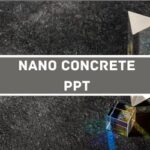Stealth technology refers to a set of advanced techniques and designs that make objects, such as aircraft, ships, and vehicles, less detectable by radar, infrared, sonar, and other detection methods. Developed primarily for military applications, it enhances survivability by reducing the chances of detection and tracking. The concept focuses on minimizing an object’s visibility to enemy sensors, providing a strategic advantage in combat situations.
Also See: Hydrology PPT
Stealth Technology PPT: Principles, Applications, Future
Key Principles of Stealth Technology
Stealth technology operates on several principles, including radar cross-section (RCS) reduction, thermal signature management, and noise suppression. RCS reduction involves designing surfaces and shapes that deflect radar signals away from their source. Materials with low radar reflectivity, known as radar-absorbent materials (RAM), are also used. Thermal signature management minimizes heat emissions, making the object harder to detect using infrared sensors. Additionally, advanced coatings and design features help reduce acoustic and visual signatures.
Also See: Stone Mastic Asphalt PPT
Applications in Military Aviation
Stealth technology is most commonly associated with military aircraft like the B-2 Spirit bomber and F-35 fighter jet. These aircraft are designed with smooth, angled surfaces to scatter radar waves and incorporate RAM coatings to absorb radar energy. Their engines are often concealed to reduce heat and noise, further enhancing stealth capabilities.
Naval and Ground Applications
Stealth technology is also applied to naval vessels, such as stealth warships, which use angled hulls and radar-absorbing materials to reduce detection. On land, stealth is used in armored vehicles and mobile systems to evade enemy sensors. These designs often integrate camouflage and heat-dampening features.
Also See: Industrial Automation PPT
Challenges and Future Developments
Despite its advantages, stealth technology faces challenges such as high costs and evolving detection systems. Advances in radar and sensor technology continually push the boundaries, prompting ongoing research to improve stealth capabilities and maintain an edge in modern warfare.
Table of Content for Stealth Technology PPT
- What is it?
- How is it achieved.
- Vehicle shape and structure
- Radar Absorbing Materials (RAM)
- IR Emission
- Electromagnetic emissions
- How to counter
- Conclusion
- References
Free Download Link
Related posts:
 EyeRing Technology PPT: Meaning, Working, Advantages, Applications
EyeRing Technology PPT: Meaning, Working, Advantages, Applications
 Nano Concrete PPT: Meaning, Properties, Materials, And Uses
Nano Concrete PPT: Meaning, Properties, Materials, And Uses
 Stone Mastic Asphalt PPT: Meaning, Composition, Benefits
Stone Mastic Asphalt PPT: Meaning, Composition, Benefits
 Blue Gene PPT: What, Why, History, Future
Blue Gene PPT: What, Why, History, Future
 Smart Dust PPT: Meaning, Working, Applications
Smart Dust PPT: Meaning, Working, Applications
 Ambient Intelligence PPT: Meaning, Benefits, Future
Ambient Intelligence PPT: Meaning, Benefits, Future